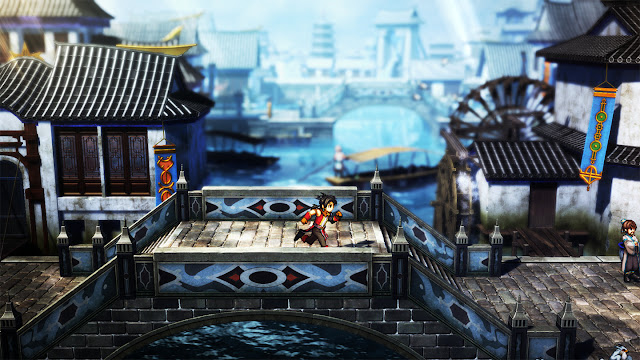F1 2020 by developer and publisher Codemasters—Sony PlayStation 4 review written by Nick with a copy provided by the publisher.
Estimated reading time: 5 minutes
The F1 series has long been about the racing, as well it should be. However, as good as the product has been on the track, I have long felt that it was a bit shallow off of it. Codemasters deserves a ton of credit for the newly implement My Team, which lets you operate as an owner as well as a driver in F1 2020. This plus the numerous options make this not just a deep offering, but an accessible one as well.
I will preface my review by admitting that I tend to have a mixed relationship with accurate, simulation racing games like this. My racing preferences tend to lean towards scraping paint and driving a bit more arcade-like, but the F1 series has often been one of the few exceptions for me because it feels quite different from most racing titles.
It helps that F1 2020 has a ton of options, many of which make racing life a bit easier for those new to the series or just do not want to deal with a lot of the manual options involved with racing an F1 car. There is a ton of skill that goes into racing in this game, and I found myself starting with some of the automations, but graduating to some of the more advanced options. This created more errors on my part, but was decidedly more entertaining as well.
As for the actual racing, the AI is reasonable in its aggressiveness and its reactions to your attempts to pass. Given the incredibly high speeds you attain in F1 racing, turns are tricky and you will slide. Tires matter. In fact, your car development really matters, but more on that later. There is a rewind feature (similar to what we’ve seen popularized in games like Forza) that you can trigger if you feel like using it. I try not to in these games, but sometimes there is a learning situation there that I will tackle a few times just to figure out how to handle it better in the future as well. Still, this is another nice option that helps to make sure that the player can enjoy their time spent racing.
The overall presentation is solid if not always spectacular. It is interesting to me that during the race itself, things look pretty great when the speed of the action makes it challenging to focus on the small details, but when I would watch replay some of the visual rough edges were a little more evident. Sound effects are also does the job – you hear the roar of engines and the chatter on your radio. Probably the most interesting new presentation feature is the addition of a split screen so you can have some local racing fun. Given the nature of teams in F1, this feature just makes too much sense to have waited to long to see it – but it sure is a lot of fun.
Speaking of teams, the My Team mode adds a nice management aspect to the game that has been missing in the career modes of years past. If you want to skip the micromanagement, you can absolutely just stick to the driving, but for people like myself that really dig into the franchise modes in many sports games, these management aspects are engrossing. In prior versions of the game, your racing style had an impact on how your car developed, but with the My Team mode everything is far more intentional.
Things kick off with establishing your driver – because your character is that rare combination of driver and owner. You then select a sponsor (and these have various trade-offs such as money upfront versus earnings and goals to be met), and then hire your AI partner (since it is a team sport, as mentioned above) and then balance hardware that has differing levels of durability and performance – against cost.
You are then interviewed – and will be during different points in the season. The answers you give will have an impact on everything from moral, Research and Development, the experience growth of your AI partner and income. From there, you enter into a continuous balancing act as you fill your calendar with different kinds of meetings and events that all have their own pros and cons to consider. These elements of progression are really interesting and it lends strategy and depth outside of the racing, but actually impact the racing in tangible ways as well. All of this adds a lot of longevity to the game, especially when you consider the tremendous number of ways to spend your money.
For racing fans, F1 2020 is the real deal and the best entry in the series I can recall. Incredible replay value and management depth go a long way towards making this title one I find myself replaying more than previous iterations. Usually a season or two does it for me, but I’ve already surpassed that and intend to go back for more. Add to it the split-screen feature and wealth of accessibility options and there is more broad appeal to be had here than many of the earlier games in the series. So, if you were turned off by the simulation style of the game in years past – go ahead and give this version a go, as you can tweak your experience in numerous ways.
Score: 8.75 / 10



































































